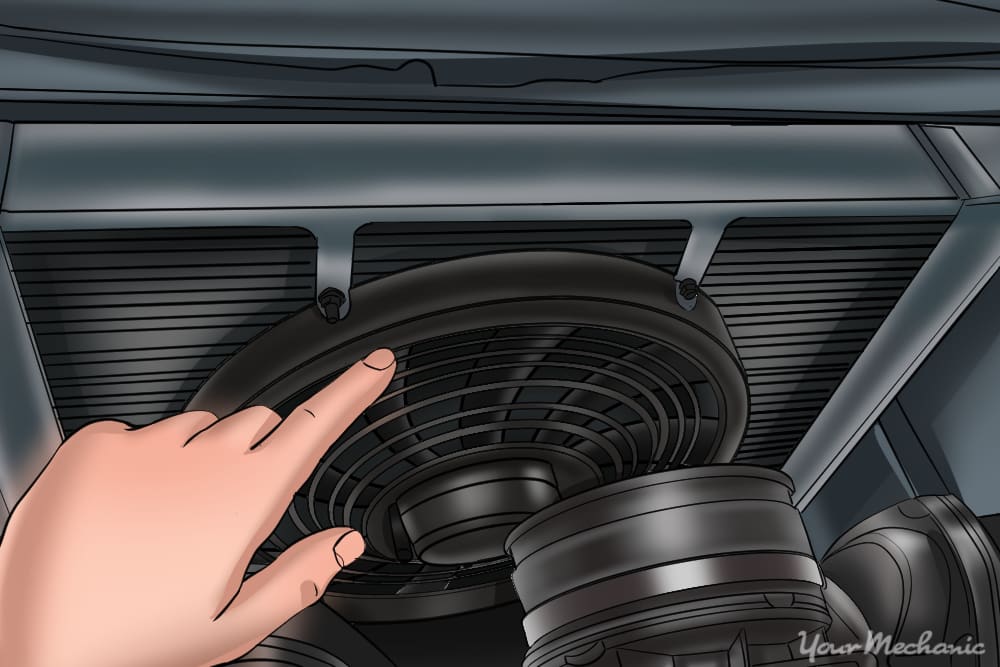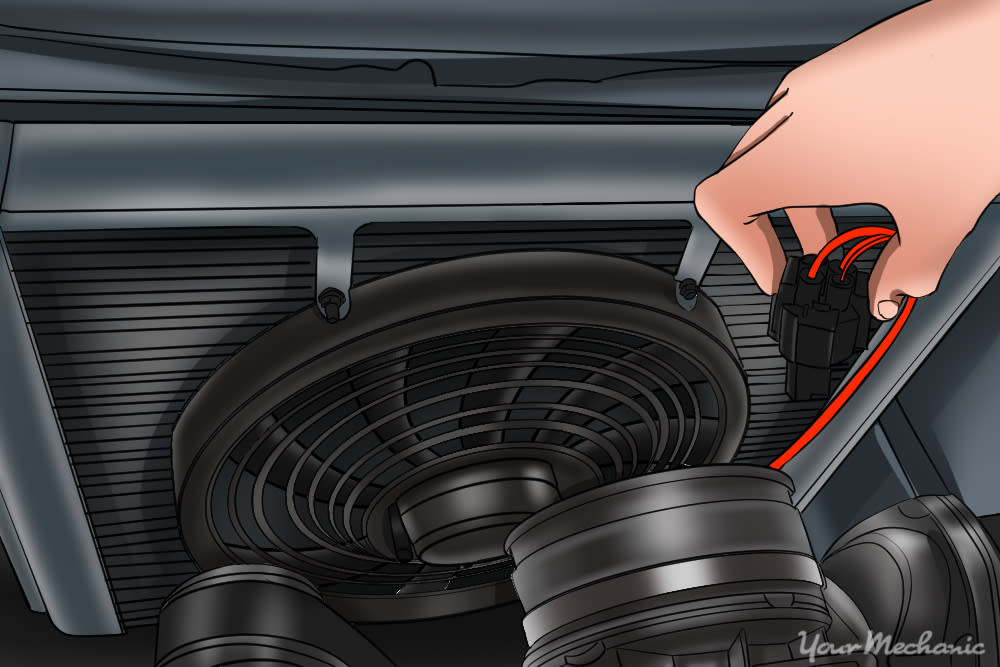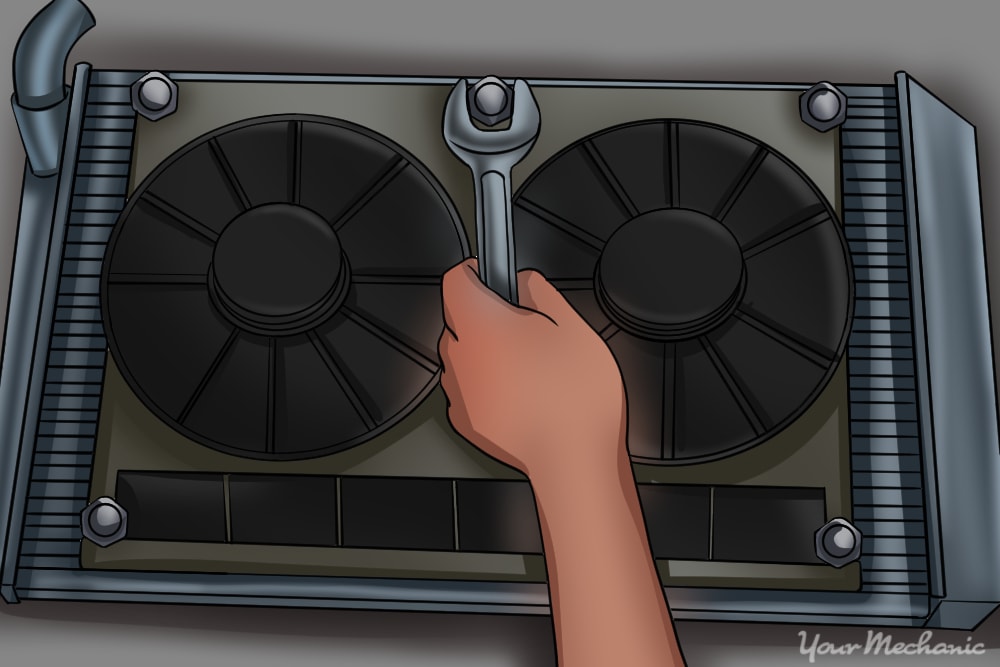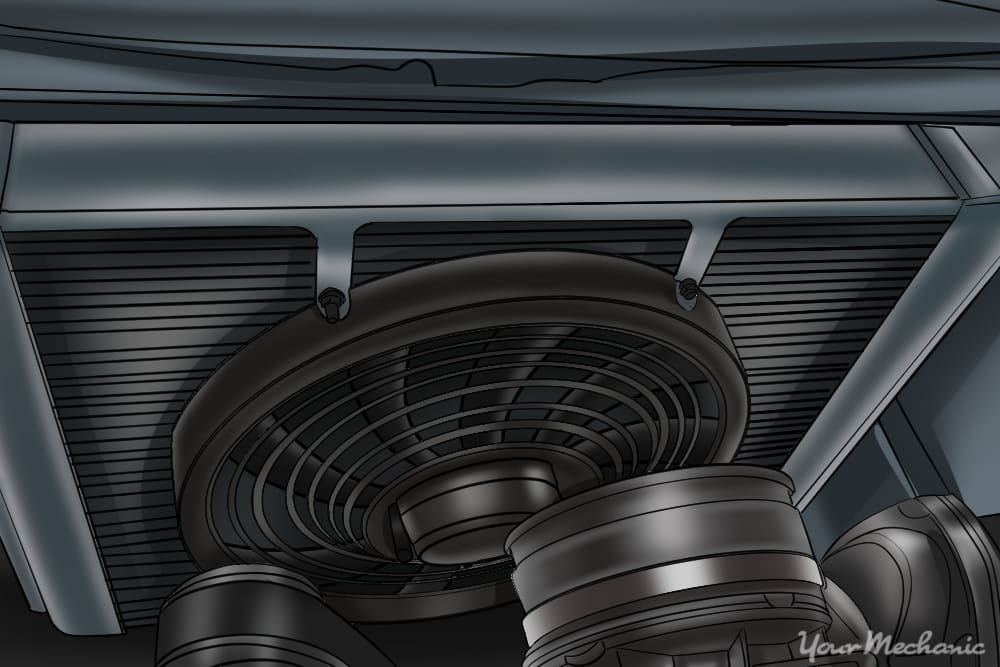

When the AC system needs a little extra help to cool the condenser, the AC condenser fan turns on. Most modern cars are equipped with dual electric fans. One will be for the radiator the other is for the condenser. The condenser fan is used to blow air across the condenser while the car is stopped or at low speeds which allows the AC to stay the same temperature inside the vehicle.
Without the condenser fan the AC system can stop working. This is due to the pressure becoming too high if the refrigerant is not cooled from a hot gas to a liquid. The car’s computer senses the pressure climbing too high and disables the AC system. This article will cover how to replace the condenser fan on most vehicle models. The fan should only be replaced if it has been diagnosed as needing a replacement.
Part 1 of 3: Determine if the condenser fan is faulty
Materials Needed
- Manifold gauge set
- Owner’s manual
Step 1: Check the condenser fan operation. Start the engine and check under the hood.
Locate the fan assemblies. One will be for the radiator and the other will be for the condenser. In some cases, you may need to refer to the owner's manual to tell them apart.
With the AC on, the condenser fan should be on when vehicle is at idle. If the fan is not on, it may need to be replaced.
Step 2: Check the fan relay. If the condenser fan relay does not turn, it may not be getting power.
This can be due to the fan relay. Check the underhood relay box. There are two options: test the relay and make sure it is functioning properly or swap the relay with a known working relay and see if the fan turns on.
If the fan now turns on, then the relay will need to be replaced.
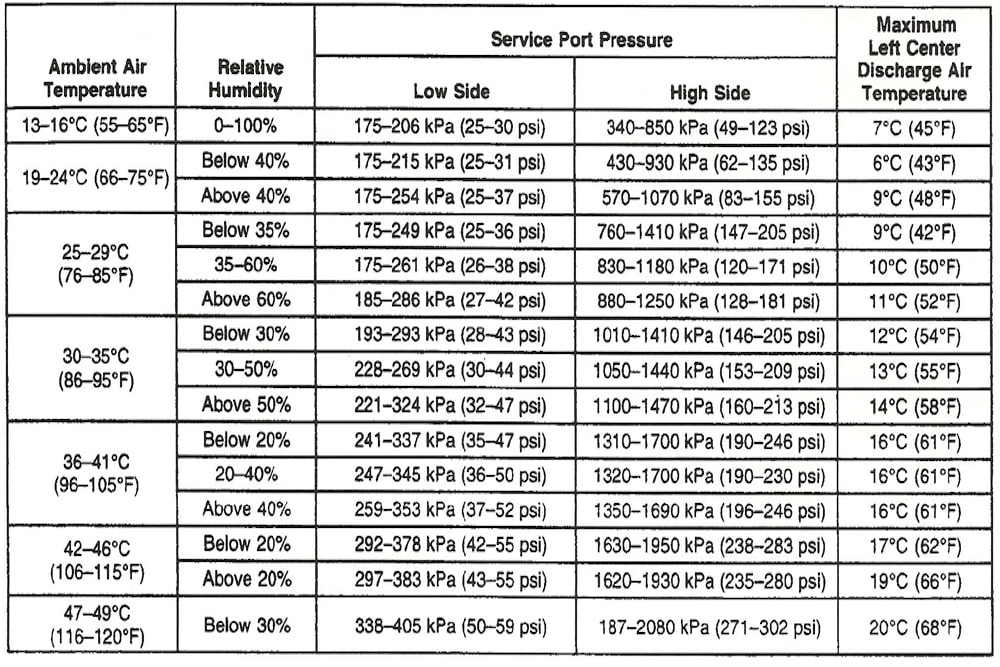
Step 3: Check the AC system pressures. The manifold gauge set will need to be hooked up to the vehicle.
The blue hose will be installed onto the low side port. The high side will be installed onto the high pressure port.
The readings found will be compared to the chart for reference. These are general readings listed on the chart; consult the owner's manual for your specific vehicle. If the high and low side pressures are not within spec for your vehicle, then the AC system may have a fault.
- Warning: Pressure inside the AC system can be extremely high and cause serious injury. If you are unsure about how to use a manifold gauge set to check the AC pressure then leave it to the professionals.
Part 2 of 3: Removing the condenser fan
Materials Needed
- Basic socket set
- Eye protection
- Condenser fan
- Owner's manual
Step 1: Remove the electrical connection. The first step will be to disconnect the electrical connectors found on the condenser fan.
On some vehicles, the fan is attached to the radiator fan assembly and they must be removed together. If this is the case, the radiator fan connector must be disconnected as well. Disconnect the electrical connector and move to a safe location.
Step 2: Remove the mounting bolts. At this point all that is in the way of removing the fan should be the mounting bolts.
If any other parts are in the way of removing the fan, this must be done before the mounting bolts are removed. How much is removed depends on make and model; consult the owner's manual for your specific vehicle.
Remove the mounting bolts from the top and bottom if equipped. Carefully slide the fan assembly up and out of the vehicle now.
Step 3: Install the the new condenser fan assembly. With the condenser fan assembly removed, this is the time to swap over any parts that may be reused.
After reused parts are swapped over, the fan assembly will be installed in the reverse of removal. Gently slide the assembly down into its mounting location with care not to break the fan assembly or damage the radiator.
When the assembly is in place, the mounting bolts can be installed and tightened to specification.
Step 4: Hooking up the electrical connection. Once the condenser fan in installed and in its final location, the electrical connecter previously removed will need to be installed.
Hook up the electrical connection to any fans removed and make sure the connector is seated properly.
Part 3 of 3: Checking the condenser fan for proper operation
Step 1: Make sure the fan turns on. Once all repairs have been completed and the work looked over, it is now time to test the fan again.
Turn the vehicle on and turn the AC to the coldest setting. The condenser fan should be on now. If the fan assembly does not turn on, inspect the work performed and make sure no loose connections are present.
The fan assembly should turn on with the AC when the engine is at idle. If it does not, further diagnosis may be required.
Replacing the condenser fan assembly can be an easy task to restore the AC system to its proper working order. If the condenser fan assembly is left unattended for too long, it can even cause the vehicle to overheat. Taking care of this issue will not only provide comfort when driving, but it will also keep the vehicle in proper working order. Be sure to have an inspection performed if you notice your car surging while the AC is on.


